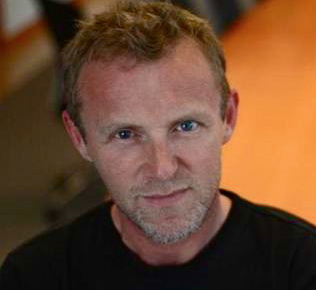Note: Jo Nesbo has been nominated for many prizes for his work, and has been WINNER of the Riverton Prize of 1997, the Glass Key Award for 2008, the Norwegian Booksellers Best Novel of the Year Awards for 2000 and 2007, the Norwegian Book Club Prizes for Best Novel of the Year in 2007 and 2008, the Edgar Award in 2010, and Norway’s Peer Gynt Prize of 2013.
“The age of mercy is over, and…the day of judgment has arrived. But as the Messiah is running late, we have to do his job for him….Justice. The kind of justice which is above the law.” –Simon Kefas
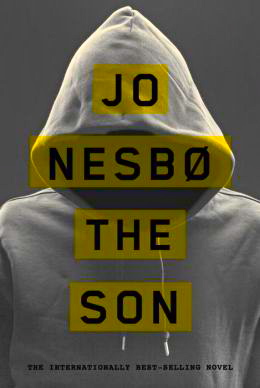 Norwegian author Jo Nesbo never writes the same book twice, even within his best-selling series of ten Harry Hole thrillers. From The Redbreast, an historical novel which examines Norway’s Nazi era past and its neo-Nazi present, to The Snowman, a horror novel which out-horrors Stephen King, and The Leopard, with action which moves from Norway to Hong Kong and the Democratic Republic of Congo, Nesbo always keeps the narrative moving at a ferocious pace, and the excitement at fever pitch. Though the reader does come to know Harry Hole and those who share his life to some extent during these ten novels, the emphasis has always been on action and thrills, rather than character. Harry, an alcoholic loner at heart, has never been complex. Nesbo’s focus changes with The Son, a standalone novel. Though the plot here is every bit as fast-paced as those of Nesbo’s Harry Hole novels, the scope is smaller and more intimate, and for the first time, Nesbo seems to be allowing the reader inside his characters, making the characters and themes more complex and fully-developed. The novel is tightly organized and totally controlled, and I suspect that it will be HUGE – the biggest-selling book Nesbo has ever had.
Norwegian author Jo Nesbo never writes the same book twice, even within his best-selling series of ten Harry Hole thrillers. From The Redbreast, an historical novel which examines Norway’s Nazi era past and its neo-Nazi present, to The Snowman, a horror novel which out-horrors Stephen King, and The Leopard, with action which moves from Norway to Hong Kong and the Democratic Republic of Congo, Nesbo always keeps the narrative moving at a ferocious pace, and the excitement at fever pitch. Though the reader does come to know Harry Hole and those who share his life to some extent during these ten novels, the emphasis has always been on action and thrills, rather than character. Harry, an alcoholic loner at heart, has never been complex. Nesbo’s focus changes with The Son, a standalone novel. Though the plot here is every bit as fast-paced as those of Nesbo’s Harry Hole novels, the scope is smaller and more intimate, and for the first time, Nesbo seems to be allowing the reader inside his characters, making the characters and themes more complex and fully-developed. The novel is tightly organized and totally controlled, and I suspect that it will be HUGE – the biggest-selling book Nesbo has ever had.
The novel’s opening is packed full of information which sets the scene and introduces characters in Oslo’s maximum security prison. Sonny Lofthus, a thirty-year-old man, has been jailed for the past twelve years after admitting to killing two people, a false confession which he gave willingly at age eighteen in a deal with officials which has guaranteed him a never-ending supply of drugs while in prison. He is always so “mellow,” in fact, that his fellow-inmates regard him as a kind of Buddha figure, one who says little, goes into trances, and provides absolution to criminals who seek it. Part of Sonny’s original problem was connected to the fact that his father, Ab Lofthus, whom he idolized, committed suicide after confessing in writing that he had been a crooked cop, a mole within the department. Sonny, who was a teenager at the time, got hooked on drugs, and went downhill from there. Convicted soon after his father’s death of two murders which he did not commit, he served twelve years of his sentence before being allowed out on day release. Unfortunately, the wife of a well-known financier was discovered murdered while he was out, and Sonny found himself at the center of the investigation. When Sonny then learns from a prison old-timer that he knows the name of the powerful, big-time criminal who actually killed his father, Sonny is stunned, and so determined to avenge his father’s phony suicide that he goes through drug withdrawal on his own in an effort to get clean – and then get even.
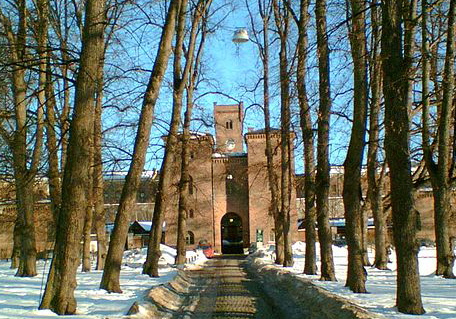
The Oslo Prison. A new-state-of-the-art prison, more similar to the one described in the novel, has been built in Halden, about 75 miles from Oslo.
All this – and much more – happens in just the first fifty pages of the novel, as Nesbo introduces a dozen or more characters, and provides the motivation and methods by which Sonny will escape on his mission for justice, not just for his father but for himself and all those others that he knows have been wronged. The reader, too, learns just how clever and how protected the criminal underworld has been, how they have insinuated themselves into all levels of police investigations, how they have blackmailed law enforcement officials, and how they have threatened innocent families to make it all work. The victims are depicted with depth and understanding here, and the reader quickly discovers that the absolutes which most of us take for granted in our own lives do not apply here. We may think of justice as an absolute term, and good and evil as polar opposites, but the “evil” characters as they develop here often become sympathetic, despite their criminal behavior, while some of those “good people,” like the chaplain who advises Sonny to confess to the new killing he did not commit, are among the most venal.
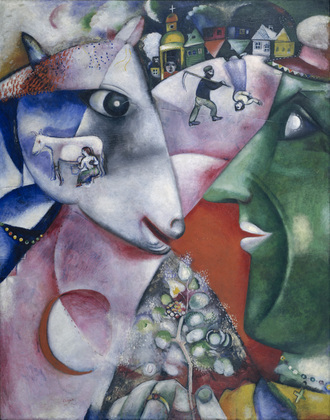
Simon Kefas takes his wife Else, suffering from failing eyesight, to a Chagall exhibit, which he believes she might enjoy for the colors.
Simon Kefas, the inspector who investigates the new murder, soon discovers that Sonny originally denied all knowledge of the new murder, and he begins to wonder about other aspects of Sonny’s “confession” as it pertains to higher management of the police and prison system. Simon, like Sonny, has problems, namely a gambling addiction which he fights every day, and he refuses to become involved in the internecine rivalries which might lead him to make money “off the books,” money he desperately needs for crucial surgery for his wife. The common threads between Sonny and Simon make both of them more human, and actually similar, despite the fact that they are technically on opposite sides of the law.

An Argentine Mastiff (dogo), a dog banned in Norway, plays a role in one dramatic scene in this novel.
The novel continues to broaden its scope after Sonny’s escape (which is announced in the first sentence of the book jacket), and there are many scenes which long-time Nesbo readers will find surprising. A humorous scene in which Sonny learns to drive, and scenes illustrating his genuine innocence regarding technology, his first kiss, and his developing love story all make him a “real” person. A young boy, Markus, who lives in the house beside the house where Sonny grew up, likes and wants to help Sonny, adding depth to what we already know about Sonny through the contrast in their lives. The violence for which Nesbo’s novels are noted continues here, but in a more personal setting than what long-time readers are accustomed to, as Simon and his partner, Kari, continue to investigate murders, drugs, and corruption at the highest levels. Scenes involving The Twin, the kingpin of crime, are as horrifying as one would expect them to be, a murder involving an Argentine mastiff (dogo) is grotesque, and some of the murders committed as “justice” by Sonny (and Simon, for that matter) are as visually disturbing as those committed by the “criminals.” The ironies and twists at the end of the novel are unforgettable, though many readers will probably figure out one key part of the conclusion ahead of time.
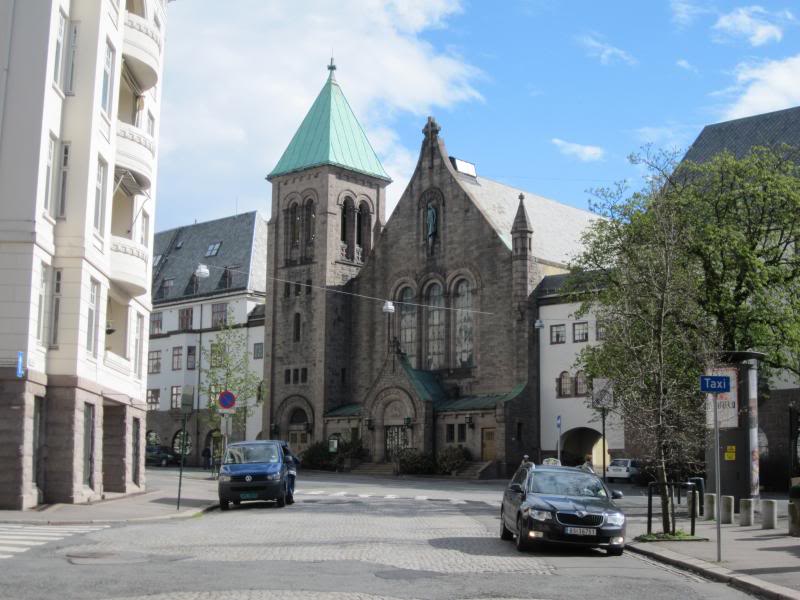
Simon sometimes enjoys stopping in at a small church, which resembles this one, when he needs private time to think.
Nesbo often uses religious imagery here, from the title of the book to its opening quotation: “And he will come again to judge the living and the dead,” along with the quotation at the beginning of this review (from late in the novel). The concepts of guilt and atonement as motivations for avoiding evil pervade the novel, as characters often behave as they do to atone for past “sins,” rather than because of their inherent sense of what is good and right. The novel sometimes veers into the sentimental, romantic, and coincidental (a new and unique criticism of Nesbo), but many readers may find this a welcome change from the horrors which have characterized so many Nesbo novels in the past.
ALSO by Nesbo: THE BAT (1997), COCKROACHES (1998), THE REDBREAST (2000), NEMESIS (2002), THE DEVIL’S STAR (2003), THE REDEEMER (2005), THE SNOWMAN (2007), HEADHUNTERS (2008), THE LEOPARD (2009), PHANTOM (2011), POLICE (2013) BLOOD ON SNOW (2015), MIDNIGHT SUN (2016)
Photos, in order: The author’s photo appears in Version:1.0 http://www.bostonglobe.com
The Oslo Prison, still being used, is shown here: http://en.wikipedia.org/ A new state-of-the-art prison, similar to the one described in this novel was built in Halden, about 75 miles from Oslo, in 2010.
Marc Chagall’s “I and the Village,” from 1911 is depicted here: http://en.wikipedia.org/wiki/Marc_Chagall Simon Kefas takes his wife to a Chagall exhibit because he thinks she might be able to enjoy the colors of the paintings, despite her failing eyesight.
According to the author, the Argentine Mastiff (or dogo) is a prohibited dog in Norway, though one such dog is involved in a bloody episode in this novel. This photo and descriptions of the dog, depicted in the article playing with children, are here: http://mantronix.hubpages.com
Simon sometimes enjoys visiting St. Paul’s Catholic Church in Oslo. It is described as having a very small tower, three steps at the entrance, and situated in a neighborhood with apartment buildings surrounding it. The church pictured here, the Frogner Church, fits the description, though it is a Church of Norway church. http://www.skyscrapercity.com/ The photo was posted on this site by Joamax.
